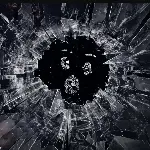
los anuncios inmobiliarios de Villeneuve pueden dejarse de lado
on Denis Villeneuve's Dune
Denis Villeneuve, the creator of a real estate advertisement featuring a landform called Eracos, persuades us that this virtual land can (or has been) developed.
Come on! A Hollywood real estate agent convinces you that you can buy exquisite decorations here. Thus, you observe the meticulously carved desert landscape. Villeneuve doesn't promise that you can make proper choices about the structure of the house, since, as you must understand, Eracos only exists on the surface. Yet, the elaborately designed model home suggests a comfortable lifestyle "purchasable" upon buying it. However, every customer may at some point realize that the model home exists merely as a "sales model". The hypothetical, plastic-like materials and visuals urge consumers to envision the prospective life on offer. Do these reminders of Eracos, Gedi’s Star, or Carradane, which also serve as "narrative models", resonate with you? Here, Villeneuve promises you all the approximations of goodness, and everything you could wish for: Steel-green neighborhood decoration (epic ambience), sprawling house sets (almost demanding sculptural composition) and high housing prices to assert your status. The complexity but laziness of the text is not lost on you, nor are the greenery and parks (sandworms, sandworms, sandworms!). Villeneuve takes these almost deceptive "conditions" and prints them in large, bold letters on his proudly displayed advertisements to highlight his talent and expertise as an advertising professional.

He coins what he's selling as "conditionals" to criticize a similar voyeuristic effect. People wait for their right to "see" by buying a movie ticket. They gather in the ticket hall, eager to witness the spectacle: they can only look ahead to the only bright object in a dark room, which induces the shallowest understanding of "immersion"—the satisfaction of reality and the fantasy of the possible. People anticipate an event, an event that needs to be "convincing". As the popular tagline suggests, "Movies are the art of dreaming!" However, this is where the shallowest understanding of dreams emerges. In the pursuit of authentic decoration and "immersion", the audience and Villeneuve exchange elements (the grand narrative combining text and visuals). Consequently, the satisfaction manifests a state of consciousness—one waits for an event to be convincing, or rather, for an mis-en-scene to be decorative. Such cinematic atmospheres push us to believe in something referred to as a dream, established almost pathologically by its creators. Perhaps it's a kind of flashy decor and a "star-studded gala": Zendaya appears in Paul Etrudi’s dream in the grand backlighting of a Platinum Lord Tour AD from the previous film.

Jodorowsky's followers have often critically decorated the film like an elaborate bed, made from various components—mattresses, bedding, pillows—without which you can't accurately describe a "bed". They have assembled these elements into a sellable commodity. However, it is with understandable disdain that we view those creators who happily seek such decoration. Of course, it is not intentional, but rather due to their negligent material creation, modeling, and functional treatment.
In light of the means of creating mis-en-scene via lazy compromises, "Dune 2" is considerably more extreme than its predecessor "Dune". Perhaps the most apparent example of this is the sandworm—a metaphor for danger and mystery. In the opening scene, the totem-like form of the sandworm hides under the desert. By the end of the film, the audience finally sees it in its entirety–a sound process. As an act of writing that encapsulates the geographical "sanctity" of Eracos, the sandworm's teeth and towering body comprise its unique physical appearance. However, in Dune II, the sandworms forfeit their material existence as a "narrative sacrifice" to Paul Etritti. The critics will contend that this is an appropriate trade-off, stating that Villeneuve had to support the development of the sandworm as a narrative element for Paul Etrudi's character. However, this represents the exact trade-off mentioned earlier. I believe this logic to be lazy, as it arbitrarily reduces the movie’s material into easily accessible narrative elements to maintain the story and mis-en-scene's efficient functioning. It is a hero's story, and the sandworms shall fit into some of the hero's portrait. Fine, we get it.

In comparison, in his more recent work, "Oppenheimer", Nolan engages with matter significantly more than the Dune series. Despite having previously critiqued "Oppenheimer" as a type of dried up, dying material narrative, Nolan's appreciation and interest in the material is inspiring. Even if its understanding of physical existence is somewhat sterile, "Oppenheimer" cherishes the intricate workings of nuclear matter in the microscopic world. Thus, the audience gets to see the climax of the dispersion and collision of matter in a dazzling white light. We remember such matter because Nolan doesn't use it superficially as a decoration. "Oppenheimer" delivers spectacle but abandons superficiality, which is arguably a valuable virtue over the "Dune series". Creed embodies this approach most thoroughly. One can appreciate the substance of a circular piece of metal moving slowly across the surface of a glass panel, allowing you to hear/see the interaction of the two substances without leaving any trace.

There's no denying that Nolan and Villeneuve are two different types of creators with almost polar opposite interests and uses for matter in their films. However, it is this judgment of direction that leads us to perceive Nolan as a potentially better manipulator of matter and Villeneuve as a subpar creator of mis-en-scene that serves only to bloat a narrative with efficacy.
We may have overlooked the fact that an epic doesn't exist in an mis-en-scene but in an action, a word, an expression. Perhaps we shouldn't prioritize terms like "epic" when we initially watch a film—after all, isn't it a beautiful word? At least in the "Dune" series today, Villeneuve still places considerable emphasis on vast vistas, close-ups of faces, and rising frames of actors in concave poses.

In the context of "Dune", where the great machinery of power–the writer, not the characters–dictates destiny, Villeneuve appears stuck in a state of indecisiveness. Is he more concerned with the land of Eracos or the religious activities (if we may strictly refer to them as "religious") of Paul Etridi? Only he can clarify his thought process. Villeneuve's cinematic knowledge has always been alarmingly mundane. However, what should concern us more is his ornament-focused approach to mis-en-scene and his fascination with the term "epic". Perhaps Villeneuve’s weapon isn't a science fiction novel titled "Dune" at all, but rather a well-executed real-estate ad waiting to be deployed as a marketing tool.
wirtten by Wei Wei
THE DISSIDENTS are a collective of cinephiles dedicated to articulate our perspectives on cinema through writing and other means. We believe that the assessments of films should be determined by individuals instead of academic institutions. We prioritize powerful statements over impartial viewpoints, and the responsibility to criticize over the right to praise. We do not acknowledge the hierarchy between appreciators and creators or between enthusiasts and insiders. We must define and defend our own cinema. |
















































View replies 0